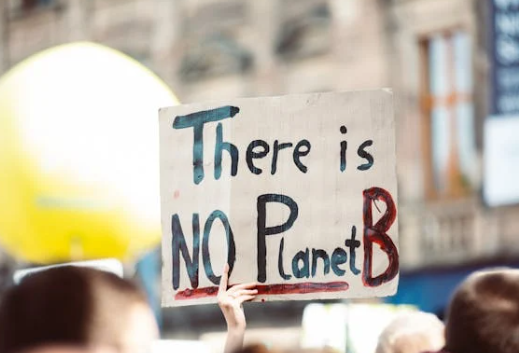
It’s easy to feel overwhelmed by the state of the planet. Headlines about melting glaciers, plastic-choked oceans, and disappearing species are everywhere. The temptation to tune out is strong — not out of apathy, but from sheer emotional fatigue.
But here’s the thing: you don’t have to change everything about your life to have an impact. Often, the most meaningful shifts aren’t about grand gestures or trend-chasing; they’re about small, daily choices that add up.
Living more consciously doesn’t mean living perfectly. It means paying attention. It means adjusting what you can, when you can — and understanding that even minor changes ripple outward.
This article isn’t about guilt. It’s about real, grounded swaps you can make that feel doable — and actually matter.

1. Swap: Paper Towels → Reusable Cloths
We use them without thinking — paper towels to wipe, clean, dry, blot. But they add up fast, both in waste and cost.
Try this instead: Cut up old t-shirts, tea towels, or buy a pack of reusable cloths. Keep them in a jar or drawer and wash after use.
Bonus: they clean better and don’t fall apart mid-swipe.
2. Swap: Plastic Bottles → Refillable Water Bottles
One of the easiest, most impactful swaps: carry a reusable bottle. The average person tosses hundreds of single-use plastic bottles per year.
A stainless steel or glass bottle lasts for years, keeps drinks colder, and reduces the plastic trail behind you.
No need for perfection — just bring it when you can. Airports, gyms, the office. Over time, it becomes second nature.
3. Swap: Fast Fashion → Fewer, Better Pieces
Fashion is one of the most resource-heavy industries on the planet — and one of the most wasteful. Cheap, mass-produced clothes don’t just clutter closets; they clutter landfills.
Try this: Start by buying less. When you do shop, look for items you can wear multiple ways, across multiple seasons. Natural fabrics like cotton, linen, and wool tend to last longer and feel better.
You don’t need to overhaul your wardrobe. Just pause before impulse-buying something you’ll wear once. That’s where the change starts.
4. Swap: Plastic Wrap → Beeswax Wraps or Silicone Lids
Cling wrap is a kitchen staple, but it’s single-use, hard to recycle, and not great for the environment.
Beeswax wraps mold around food and containers using the heat of your hands. Silicone lids stretch over bowls and dishes and can be used again and again.
They’re simple swaps, but over the course of a year, they can cut out a surprising amount of plastic.
5. Swap: Conventional Cleaning Products → Refills or DIY Versions
Your cleaning routine might smell fresh — but many mainstream products are packed with harsh chemicals and come in plastic bottles that are tossed after one use.
Try this: Refill stations are popping up in many cities, or you can order concentrated refills and reuse your own bottles. Vinegar and baking soda also go a long way for everyday cleaning.
Not only is it gentler on the environment, but your home will also literally breathe easier.
6. Swap: Streaming + Shipping → Local Libraries
This one might surprise you.
Borrowing books, movies, even tools and seeds from your local library reduces demand on shipping, packaging, and energy use from streaming platforms.
It also connects you to your local community and slows down consumption. Plus, libraries are free — which, in a world full of subscriptions, feels pretty refreshing.
7. Swap: Driving Solo → Public Transit, Biking, or Carpooling (Sometimes)
You don’t have to give up your car — but even using it less can have an impact.
Try walking to the grocery store if it’s close. Carpool with a co-worker once a week. Take the train instead of a short-haul flight, when feasible.
The goal isn’t to become a zero-emissions superhero overnight — it’s to be thoughtful about movement and its impact.

8. Swap: Meat Every Day → Plant-Based Meals Now and Then
You don’t have to go vegan to make a difference.
Even one or two plant-based meals a week can reduce water use, emissions, and land pressure. Lentils, beans, tofu, grains, and veggies are not only good for the planet — they’re often cheaper and surprisingly filling.
No judgment, no extremes. Just more balance.
9. Swap: Trash → Compost (Even Without a Backyard)
Food waste in landfills breaks down anaerobically, producing methane — a potent greenhouse gas.
Composting, even on a small scale, helps return nutrients to the soil and keeps waste out of landfills. If you don’t have a yard, check if your city has drop-off sites or local pickup services.
Even freezing your scraps and dropping them off weekly makes a difference.
10. Swap: Disposable Everything → Thoughtful Reuse
Look around your daily life and notice the single-use items you rely on most. Napkins, coffee cups, razors, ziplock bags, takeout containers.
Ask: Is there a reusable version of this that I could use instead?
No need to replace everything at once. Just one at a time. One coffee mug you keep in the car. One razor that lasts five years. One lunchbox that replaces 200 paper bags.
These swaps are quiet — but powerful.

But… Does Any of This Actually Matter?
It’s easy to feel cynical. After all, what can one person really change?
But remember: personal action does more than reduce your own footprint — it reshapes norms. It creates demand for better systems. It sends a signal that people care.
And over time, those ripples become waves.
Living more intentionally isn’t about being perfect. It’s about doing what you can, in a way that’s practical and honest.
Final Thought: It’s Not About Doing More — It’s About Doing Differently
Trying to live better for the planet shouldn’t feel like a burden or a branding exercise. It should feel like an alignment — between what you care about and how you move through the world.
Start with one swap. Try it for a week. If it sticks, keep it. If not, try something else.
This isn’t about being pure. It’s about being aware.
Because in the end, the best changes are the ones that last — the ones you barely notice anymore, because they’ve simply become part of how you live.



